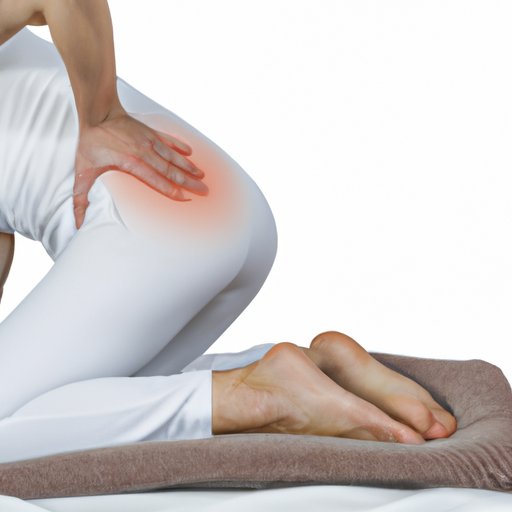
Introduction
Sciatic pain in the buttocks can be extremely discomforting and hinder day-to-day tasks. It is often characterized by a sharp pain shooting down one leg and may worsen over time. This article aims to provide practical solutions for people suffering from sciatic pain in the buttocks.
Targeted stretches
Targeted stretches can be an effective way to alleviate sciatic pain in buttocks. Stretching regularly will improve flexibility and enhance range of motion.
To begin with, before stretching, make sure that you have warmed up your muscles by either walking or performing mild exercises that elevate your heart rate. This will prepare your muscles for stretching. You can try the following stretches:
- Hamstring Stretch: Sit on the ground and extend one leg in front of you with your foot flexed. Bend the other leg, rest your foot against your inner thigh. Slowly lean forward towards your extended leg and hold for 20-30 seconds, then repeat on the opposite side.
- Piriformis Stretch: Lie on your back with your knees bent and both feet flat on the ground. Cross one leg over the other, then pull the knee of the uncrossed leg towards your chest and hold for 20-30 seconds. Switch sides and repeat.
- Seated Spinal Twist: Sit on the floor with your legs extended in front of you. Bend one leg, then cross it over the other and place it on the ground. Twist your torso towards the bent knee and hold for 20-30 seconds before releasing and repeating on the opposite side.
For people who cannot perform these stretches, alternative stretches such as Yoga can be practiced as well. Stretching should be performed daily for the best possible results.
Heat and Cold Therapy
Heat and cold therapy are effective methods for reducing inflammation and pain caused by sciatica in the buttocks. They can be performed alternately to achieve better results.
Heat Therapy: Heat therapy involves the use of heat pads or hot water bottles to ease tension and reduce inflammation. This method allows the muscles to relax because the heat increases the blood flow into the area. You can start by placing the hot pad against your lower back and gradually move it to the buttocks. This can be done for 15 to 20 minutes, several times a day.
Cold Therapy: This method helps to reduce swelling and inflammation in the affected area as it numbs the nerves and reduces pain. The cold therapy can be performed by placing a cold pack on your buttocks for 15-20 minutes. Repeat several times a day.
However, it is important to keep an eye on the affected area and switch to the other method if there is no improvement, or if skin sensitivity or rash develops. It’s important to maintain a balance between heat and cold therapy throughout the day.
Lifestyle Modifications
Lifestyle modifications are essential in alleviating sciatic pain in the buttocks. Making these changes can help improve overall health and reduce stress on muscles and joints.
The following changes can be made:
- Exercise regularly: Exercise aids in improving the body’s stamina and flexibility. Aim to exercise at least 30 minutes a day, three times a week. Consult your doctor before beginning any exercise program.
- Sleep: Sleep is essential in maintaining good health. It’s important to get enough sleep. For adults, an average of 7-8 hours should be optimal.
- Posture: Always maintain good posture when standing, sitting, and lifting heavy objects. Poor posture can cause muscle and joint strain, which can lead to sciatic pain in the buttocks.
Over-the-counter pain medications
Over-the-counter pain medications can provide temporary relief for sciatic pain in the buttocks. They work by reducing inflammation, which results in pain reduction. However, be sure to follow the instructions provided and avoid exceeding the recommended dose. Common examples of pain medications include Ibuprofen, Acetaminophen, and Aspirin.
It is important to seek medical advice before using over-the-counter pain relief medications especially if you have allergies, taking other medication or have an underlying health condition.
Seeking Professional Treatment
When experiencing sciatic pain in the buttocks, it is recommended that you seek medical advice if symptoms persist. Several professional treatments can be used to alleviate the pain.
These professional treatments for sciatic pain in the buttocks include:
- Chiropractic Care
- Physical Therapy
- Acupuncture Therapy
When seeking medical care, it is important to consult a healthcare professional with experience in treating sciatic pain in the buttocks. Always have a clear communication about your symptoms and respond appropriately to the recommended treatments.
Conclusion
Suffering from sciatic pain in the buttocks can be challenging, but it is important to recognize that there are various treatments available. By practicing targeted stretches, heat and cold therapy, making lifestyle modifications, and exploring professional treatment, individuals can find relief. If symptoms persist, it is important to seek medical advice.




